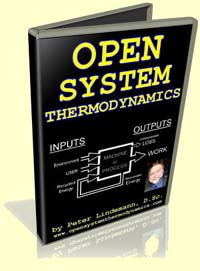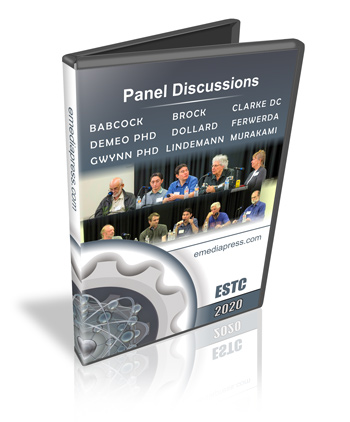
Get the whole presentation here: https://emediapress.com/shop/open-system-thermodynamics/
Since 1977, the entire field of thermodynamics was upgraded with Ilya Prigogine’s Nobel Prize winning work to include Open System Thermodynamics. In a nutshell, it means that any system that is open with the environment can output more work than the operator has to supply.
Take note that contrary to the conventionally trained academic who is always quick to point out that there can’t be more output than input is making a false argument because that is not what is actually claimed by the inventors of legitimate free energy technologies.
More output than what the operator has to supply is not the same thing as claiming more output than was is going into the system. Obviously, this means there is other input from elsewhere that is not provided by the operator of the system.
It is often said that Prigogine’s work extended thermodynamics to include open systems, but the reality is that it did not extend thermodynamics, it corrected it. The reason for this is very simple – there is no such thing as a closed system and every single system is open.
The deeper reality is that every system is open – some are designed to make use of external input that is separate from the operator’s input and some are designed to only use the operator’s input.
If you have a flashlight and the battery has 10 units of potential energy to light the bulb, when the flashlight is on, minus losses, there will only be 10 units of light or less depending on efficiency. Efficiency is the ratio if TOTAL input vs INTENDED output. This is what is meant by a closed system because it does not utilize free environmental input such as gravity, heat, light, wind, water, etc…
If you take this flashlight and stick it deep into a snow bank that is freezing, the battery will interact with this cold environmental temperature and it will not power the light as long. That is because it is not a closed system after all and easily interacts with the environment outside of itself. If it was a closed system, the battery would continue to power the light irrespective of the environmental temperature that the flashlight is operating in.
Let’s look at an example of a child flying a kite. If the child inputs 10 units of energy and the wind inputs 90 parts energy for a certain period of time, that is 100 parts of energy total input. If 70% of all that input is lost in bad kite design, wind friction on the kite, etc… that means that only 30 units of energy were actual kite flying work accomplished. 100 parts of energy were input and 30 units of INTENDED work were done – that equals 30% efficiency.
That means 30 units of intended work were accomplished but the child only had to input 10 units of work. That is a 300% net GAIN in energy compared to what the operator had to pay for. The ratio of OPERATOR input compared to INTENDED work done is COP or Coefficient of Performance. In this case, the COP is 3.0. COP does not include free environmental input and this is how every heat pump is rated for example.
The kite flying example is a perfectly legitimate free energy system where the operator of the system got way more out of the system than what he had to put in. Again, notice that this is NOT more output than input, but more output than the operator had to contribute – meaning there is indeed extra free environmental input from somewhere.
Watch this excerpt from Peter Lindemann’s Open System Thermodynamics presentation for deeper elaboration on this concept. The next time a skeptic tells you that there can’t be more output than input and that anything like that would violate the laws of thermodynamics, please point them to this post and video because the fact is that they are making an illegitimate argument about something that was never claimed by those who have real free energy technologies.
Please help spread this truth by using the share buttons below!
Aaron


